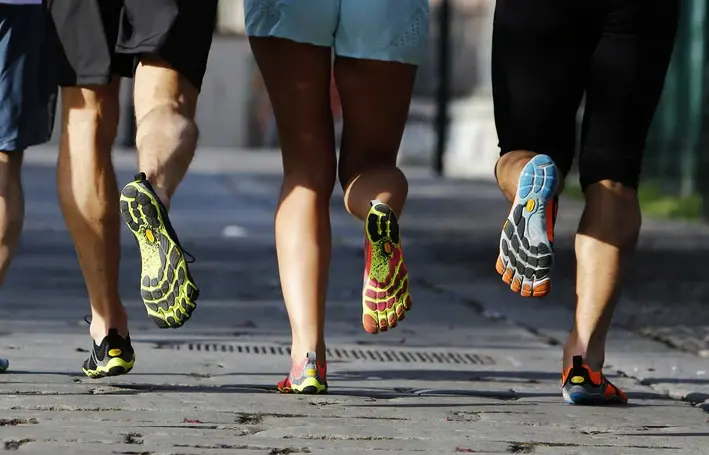Barefoot shoes are shoes made to feel like walking or running without shoes. They are also known as minimalist footwear. They have a thin and a flexible sole a wide toe box with a zero to no heel-to-toe drop. This allows feet to move more freely and also engaged the Intrinsic foot muscles.
Barefoot Shoes Specifications
Below are the key elements that define Barefoot Footwear:
- Flexible Sole: Barefoot footwear incorporates a slim and adaptable sole that allows the foot to move and bend in a natural manner. Walking shoeless aids foot and lower leg muscles more actively engage. This helps build strength, coordination. Short, varied sentences enhance interest, readability.
- Wide Toe Box: Barefoot shoes differ from traditional footwear by featuring a wide toe box that allows ample space for the toes to splay and flex naturally, promoting enhanced stability, balance, and unrestricted toe mobility.
- Zero Drop: Barefoot footwear features a heel that is level with the forefoot, typically measuring 4mm or less, a design known as zero-drop. This design supports a more natural body alignment and favors a mid-foot or forefoot strike during walking or running.
- Minimal Cushioning and Support: Barefoot footwear typically lacks significant cushioning or mechanisms for controlling movement, enabling enhanced freedom of foot motion
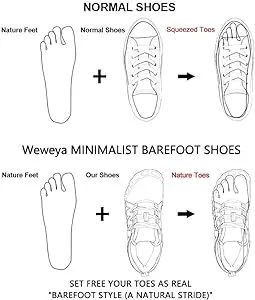
Everyday Usage of Barefoot Shoes
Walking
Barefoot shoes fit well for everyday walks. Simple, light shoes feel good for long strolls. Whether walking city streets or hiking nature trails, the flexible design is comfy. The flat soles let feet move naturally. This reduces strain and injury risk to ankles and feet.
Running
Runners around the world love barefoot shoes. They think these shoes help improve form and prevent injuries. Barefoot shoes make your foot strike midfoot or forefoot. This reduces impact forces on your legs. Wearing barefoot shoes can make your running motion smoother and better. Runners might run faster and longer distances with these shoes.
Water Activities
Barefoot shoes work well for water fun like kayaking, paddleboarding, or strolling beaches. The materials dry fast and adjust flexibly to wet feet. Furthermore, the grippy bottom gives traction on slippery surfaces. You’ll be steady and secure.
Instances Where Barefoot Shoes Shouldn’t Be Worn
Although barefoot shoes provide numerous advantages, there are specific circumstances in which they might not be suitable.
Intense Exercise Routines
For activities that entail vigorous weightlifting or quick side-to-side movements, barefoot footware might not offer adequate support and stability. In such instances, choosing dedicated athletic footwear tailored to the particular requirements of the exercise is recommended.
Severe Cold Conditions
Barefoot footwear lacks significant insulation, making it unsuitable for outdoor use in very cold weather. During chilly temperatures, it is crucial to opt for suitable shoes that offer both warmth and shield from the harsh elements.
Sizing and Fit
When selecting barefoot footwear, it is crucial to carefully consider sizing, as the fit may differ across various brands and styles. It is advisable to consult the sizing chart provided by the manufacturer and explore different sizes to acquire the ideal fit. Furthermore, certain brands provide wide or narrow selections to cater to diverse foot structures. The toe area should be sufficiently spacious to enable natural toe movement, and the shoe should offer a comfortable yet unrestricted feel. Numerous barefoot shoe manufacturers supply comprehensive sizing resources to aid in selecting the appropriate fit.
Podiatrist Recommendations
Podiatrists often advise using barefoot or minimal shoes, especially for kids and teens. This can help develop healthy feet. But it’s best to talk to a doctor before changing your shoes.
Barefoot Shoes for Men, Women, and Kids – (Amazon)
Barefoot Shoes Men
Barefoot shoes for guys give comfy feet and a natural fit. The plain design has a zero-drop sole, so toes move freely and a wide toe box too. Walk, run, or kick back in these lightweight, bendy shoes. Mens’ barefoot shoes let feet move more naturally, working all the muscles. This lowers chances of hurting your tootsies and reduces the risk of injuries.

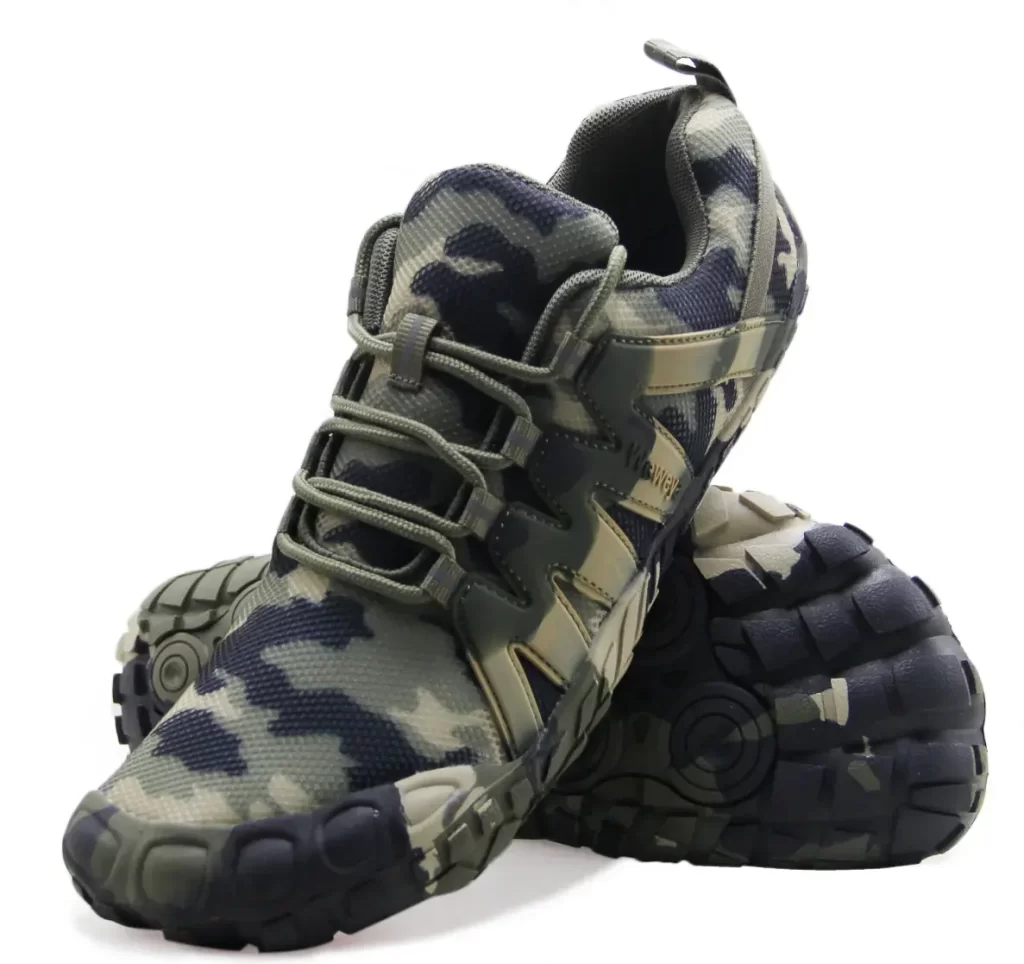
Barefoot Shoes Women
The female form is central to the design of women’s barefoot shoes. Simple sneakers to vigorous running styles are vailable. These footwear choices cater to diverse needs while prioritizing feminine features. Barefoot footware for women, provide the same benefits of letting your feet move naturally. They have a wide toe box and flexible sole and gives you comfort and performance for activities like walking, yoga excercises or workouts.
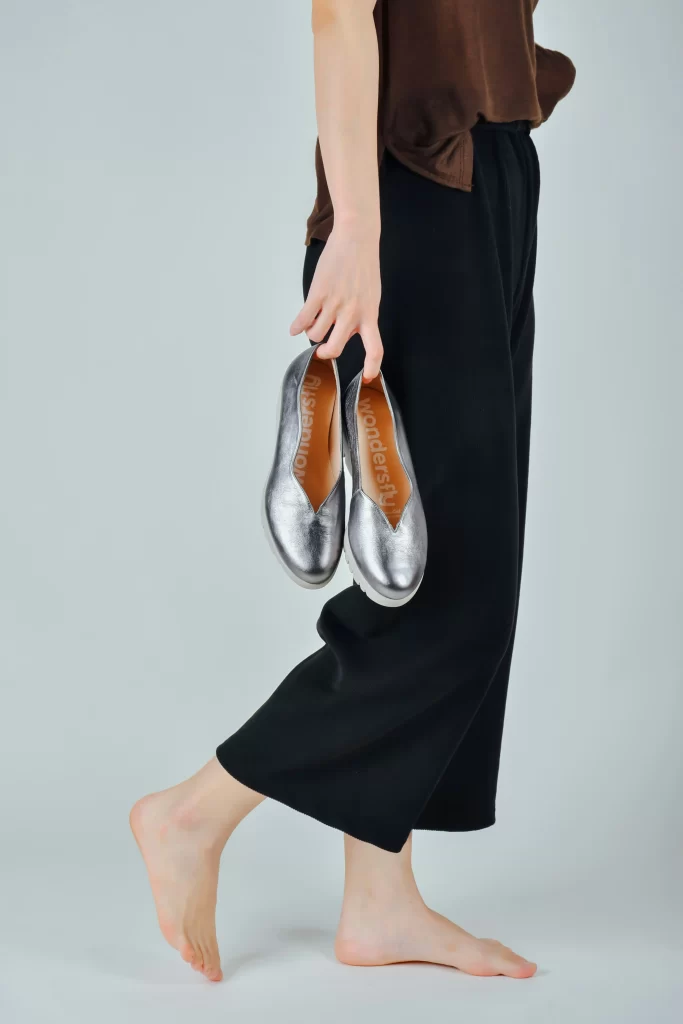
Barefoot Shoes Kids
Kids can also enjoy barefoot footware. These shoes are made for young feet and focus on comfort and flexibility. This lets kids move and play freely. It also helps their feet grow in a healthy way. Different sizes, various styles, these shoes cater to kids, from tiny toddlers to towering teens. Playing at parks or wandering wilderness, barefoot footwear provides growing feet the necessary support and protection.
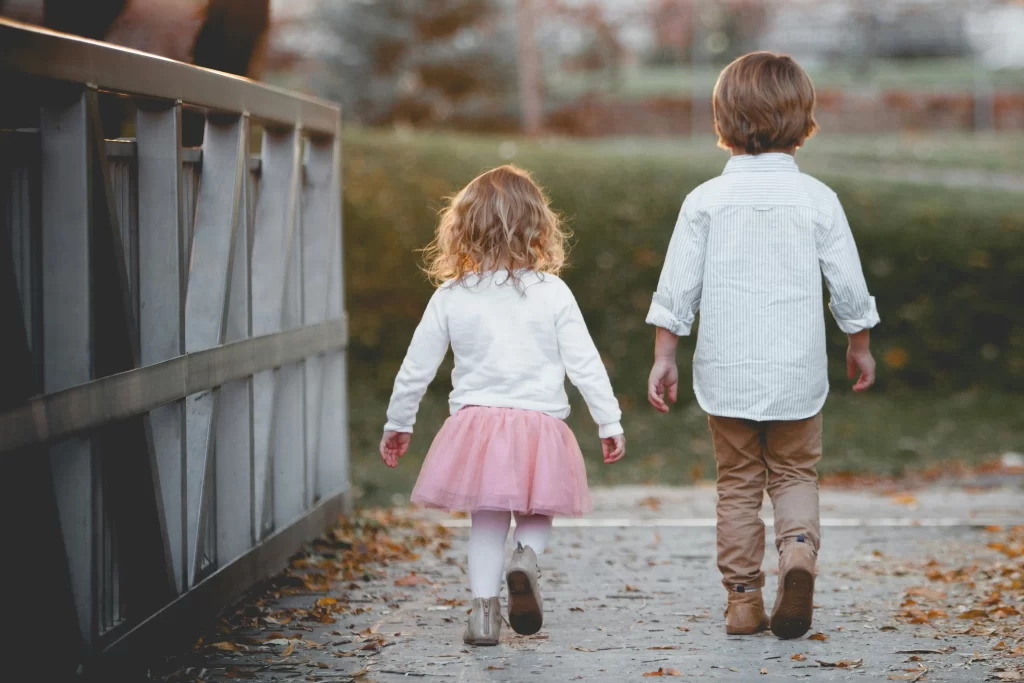
You may also like to read “Beyond the Veil: Exploring the PossiblyEthereal”
Cons of Barefoot Shoes
Transition Period
Switching to barefoot footware needs time to adjust. During this period, some people may feel discomfort or muscle soreness. This happens as their feet and legs adapt to the new footwear. Their muscles and tendons need to strengthen and adjust to the increased workload.
Lack of Cushioning and Support
Barefoot shoes have thin soles and little cushioning. This may not be enough for some activities, like high-impact sports or hard surfaces. People with foot issues or injuries may find barefoot shoes don’t meet their needs.
Limited Protection
Barefoot footware give more flexibility and freedom. But they don’t protect your feet well. This may make them not suitable for outdoor activities. The shoes don’t protect against sharp objects, rough ground, or bad weather. This could be a problem in places where foot protection is important.
Not Universally Accepted:
Barefoot shoes are becoming more popular. But not all foot doctors agree they’re good. Some experts say the benefits are overstated. They think certain people may need more supportive shoes. This is especially true for those with foot problems or issues with how their feet move.
In conclusion, barefoot shoes have some benefits. These include stronger feet, better balance, and fewer injuries. But they may not work for everyone. There is a transition period to get used to them. And they offer less protection. Whether to wear barefoot shoes depends on your personal preferences, foot health needs, and activity levels.
Disclosure: Some links on LucentZone.com may result in affiliate compensation if you choose to purchase a paid plan. Please refer to our privacy policy for our affiliate disclosure. Our site does not provide financial advice, it is for entertainment purposes only.
FAQ’s
Do barefoot footware change your feet?
Wearing barefoot shoes lets your toes spread out. This allows your foot to widen and even get longer. It also makes the arch muscles more active. This can help shorten very flat feet over time. The feet adapt to the increased freedom of movement and reduced support.
Why do Podiatrist not like zero drop shoes?
Podiatrists may not like zero-drop shoes. They worry these shoes can strain the Achilles tendon and calf muscles. The quick change from normal shoes to zero-drop shoes may cause overuse injuries or make foot problems worse. Podiatrists also don’t agree on the long-term benefits and risks of zero-drop shoes.
Why barefoot so expensive?
Barefoot shoes often cost more because of their special design and materials. The small market for these shoes means higher costs. Brands that make shoes in a sustainable and ethical way also have higher expenses. This leads to higher prices for barefoot shoes.
What kind of shoes are best for kids feet?
Kids should wear shoes with a wide space for toes, a soft bottom, and little to no heel. Proper kids’ shoes have lots of room. They are flexible and comfortable. No high. These features help their feet develop naturally. They can spread their toes and walk in a healthy way. Choose lightweight and breathable materials to keep their feet comfortable and avoid problems.
Do you wear socks with barefoot Footware?
Wearing socks with barefoot shoes is a personal choice. Some people like to wear thin, sweat absorbing socks. This helps reduce friction. Others prefer the barefoot feel. If you wear socks, choose ones with low profile and little cushion. This keeps the natural fit and feel of barefoot shoes.

